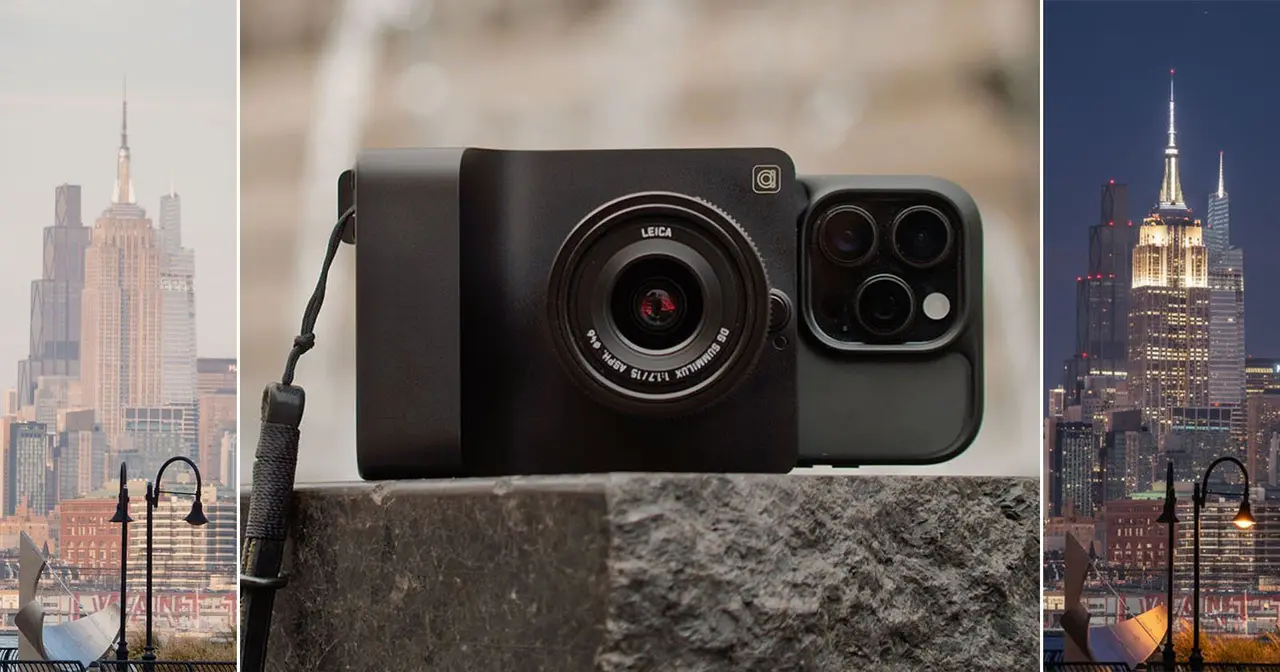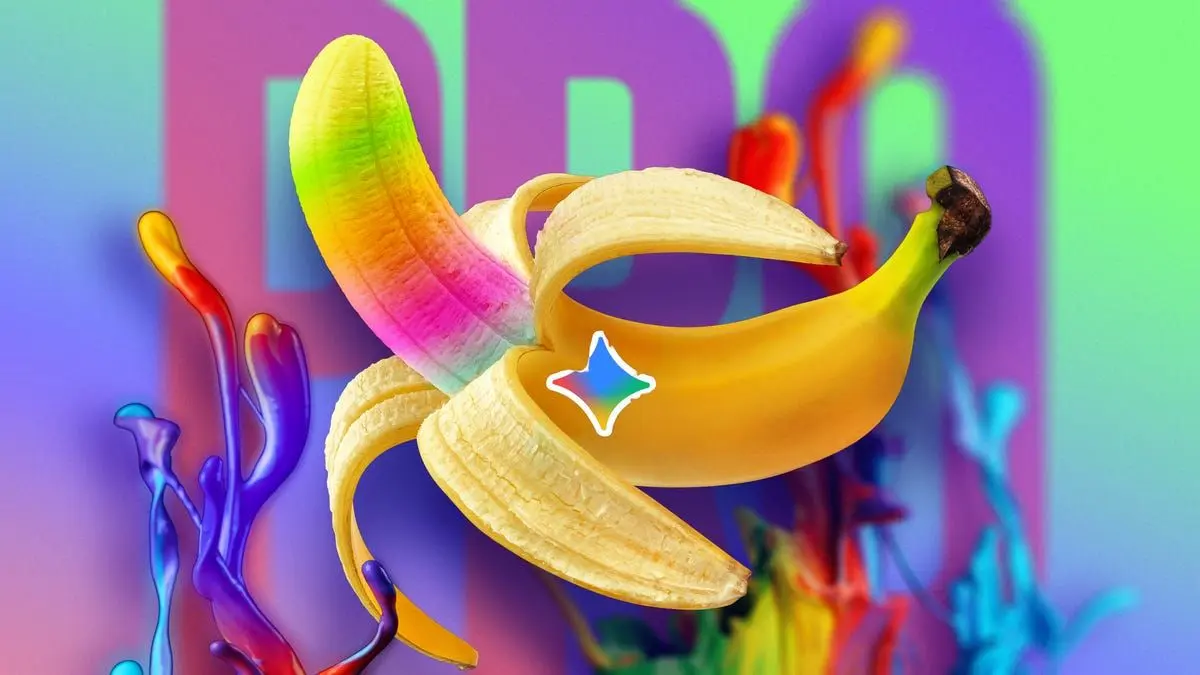Caira: The AI-Powered Camera Revolutionizing Real-Time Image Editing
4 Sources
4 Sources
[1]
No, Nano Banana didn't build a camera -- but here's how to get the same effect on your iPhone
The buzz about Google's Nano Banana, also known as Gemini 2.5 Flash, hasn't stopped since its release. While the Nano Banana trends might be cooling off with the popularity of Sora 2, users are finding new ways to get excited about the different ways Nano Banana lets them edit reality. Now, Google's Nano Banana AI is integrating with the new Caira camera. This physical camera built by a startup called Camera Intelligence, uses Google's Nano Banana image model, which is part of the Gemini ecosystem. Camera Intelligence bills itself as "building the camera of the future" by offering what it calls "the world's first LLM-driven camera for content creation." Using the Caira hardware, users can edit reality as they shoot, eliminating the step of uploading an image into Gemini and requesting edits. Caira is a compact, AI-native camera that mounts directly to the back of your iPhone via MagSafe. It doesn't have a built-in screen, instead, your iPhone acts as the viewfinder and controller. Caira is expected to launch on Kickstarter on October 30, so the hardware isn't available yet. Online rumors suggest that no one outside the company has even tested a production unit. But the groundbreaking element that is creating the stir online is the ability to make real-time, generative edits at the moment of capture. With Google's Nano Banana model embedded inside, you can prompt the camera to: And all of that happens before you press the shutter. As we all patiently wait for the release of the Caira mount for our phones, here's how you can get the same effect using Nano Banana but without the physical attachment. Nano Banana is free and Google offers 100 image generations, so you should have plenty of opportunities to let your creativity run wild. Step 1: Upload a photo to Gemini In the Gemini mobile app or web interface, tap the image icon to upload any photo from your camera roll. Step 2: Start prompting Try these Nano Banana-style prompts to mimic what Caira promises: Just like Caira's real-time edit, Gemini lets you chain prompts. Add follow-ups like: The biggest difference between the Nano Banana application and Caira is Gemini 2.5 Flash is an app and Caira is real hardware. Caira is built for real-time editing at the moment of capture, allowing users to change lighting, swap objects or apply stylistic effects before taking the shot. Gemini applies edits after a photo has been captured. The convenience of Caira requires new hardware; a dedicated camera with a Micro Four Thirds sensor that mounts to your iPhone via MagSafe. Gemini works with the iPhone's native camera and doesn't require anything extra. Caira isn't available yet, while Gemini is already live and accessible to anyone. In short, Caira is a hardware bet on the future of AI-native photography, while Gemini lets you simulate much of that experience using the phone you already have. Google didn't build a camera, but it did build the technology that might reshape how we shoot photos. The Caira camera is still on the horizon, but its core feature -- AI-powered, real-time image editing -- is already available in Gemini right now. When the camera becomes available, I'll be curious to test it for latency, battery, guardrails and creative control. Until then, the Nano Banana app is the best way to preview what AI-native photography might feel like.
[2]
Caira Is an 'AI-Native' Micro Four Thirds Camera With Google's 'Nano Banana' Generative AI Built-In
Camera Intelligence has announced Caira, an "AI-native" Micro Four Thirds mirrorless camera that attaches directly to iPhone via MagSafe. Caira is the first interchangeable lens mirrorless camera to feature Google's next-gen generative AI model, "Nano Banana," enabling photographers to perform real-time advanced generative image editing. Camera Intelligence changed its name from Alice Camera last month, and announced its pivot to AI-based imaging technology. Alice Camera was announced in 2020, promising AI-based computational photography features in a camera that attaches directly to a smartphone. However, funding and development took time, and Alice Camera didn't arrive to customers until last year. By then, the imaging, smartphone, and especially AI landscape had changed dramatically, leading Alice Camera's CEO, Vishal Kumar, to pivot. "Producing engaging, high-quality content is a necessity for solo creators and small businesses -- but they are already stretched thin and juggling multiple business demands. Content creation tools are fragmented, and users producing social media content for the first time struggle with steep learning curves for both mirrorless camera operation and editing software," Kumar said last month. Camera Intelligence's new Caira camera makes some of the same promises that Alice Camera did five years ago, including its general design. Further, the fact that Caira works alongside an attached smartphone and emphasizes artificial intelligence and computational photography is familiar. However, AI has come a long way since 2020, and Google's "Nano Banana" model can accomplish things that people barely dreamed of back then. Smartphone cameras have become increasingly reliant on artificial intelligence in recent years, especially for computational photography features engineered to overcome the limitations of relatively small image sensors and lenses. However, Caira, which has a relatively large Micro Four Thirds sensor and accepts MFT interchangeable lenses, aims to take AI much farther than simply improving image quality. Caira is generative; it can transform photos using AI as soon as they are captured. "With the integration of Google's 'Nano Banana' model, Caira ushers in a new era of on-camera 'generative editing,' moving beyond simple capture to offer in-the-moment creation and editing, for spectacular real-time adjustments that were previously only possible through complex post-production software and workflows on laptops," Camera Intelligence says. Photographers can use simple natural language prompts on the accompanying Caira smartphone app to instantly change the style of their photo, perform color grading, transform a daytime photo into a nighttime one, alter a subject's clothing or hairstyle, replace the sky, and more. Whether that is something that most photographers want or not is a matter of debate, but Camera Intelligence believes that Caira enables a new type of content creation within an audience who may have little or no experience taking high-quality photos with a traditional camera. "With Caira, we are not just launching a new camera; we are introducing a new, intelligent creative partner," says Vishal Kumar, CEO of Camera Intelligence. "Creators need more than just great image quality -- they need speed, flexibility, and tools that match the pace of their imagination. By integrating Nano Banana directly into Caira, we are collapsing traditional content creation workflows; we aim to fundamentally shift how creators capture, edit, and share our world." Camera Intelligence acknowledges that generative AI raises concerning ethical implications. The company says it is building Caira with an "ethics-first approach." In this case, it means the team is working with professional photographers to "establish responsible use cases." The team is also developing safeguards regarding its generative AI and prompts. The camera will "always adhere to Google's Generative AI Prohibited Use Policy," and as such, will not allow users to change a person's skin color, ethnicity, or core facial features. Camera Intelligence says it is focused on empowering creative expression, not manipulating anyone's identity. "We've put a lot of thought into this technology before offering it to our customers. Despite the skepticism surrounding generative AI, we believe photographers shouldn't fear it," Kumar says. "Thoughtful integration of this has the potential to be truly helpful. We chose Google's Nano Banana because it's the best model we've seen for maintaining consistent character details and seamlessly blending new edits whilst preserving the original image's optical quality. Its one-shot editing capability is also exceptional, frequently delivering perfect results in a single attempt without unwanted hallucinations. It truly feels like magic," the CEO concludes. Camera Intelligence says Caira is built for creators and businesses who require high-end image quality, extensive creative freedom, and an accessible, streamlined imaging tool. It is a bold camera with many ambitious promises. Caira's reliance on generative AI will undoubtedly ruffle the feathers of some photographers, but it is far from the first imaging product to feature generative AI technology. Many photo editing applications rely on generative AI for their latest features, and most new smartphones have increasingly integrated generative AI in recent years. However, a full-blown interchangeable lens camera with built-in generative AI? That is very different. The images below show input and output examples captured using pre-production Caira hardware and software and edited using Google's "Nano Banana" generative AI. Like the Alice Camera, Caira will launch first on Kickstarter. The campaign is slated to begin on October 30, and those interested in staying up to date with he project or backing it at the end of the month can sign up for notifications on Camera Intelligence's website. Customers can also secure the lowest possible price -- $695 -- with a $50 deposit. Caira will retail for $995 when it arrives in January 2026; however, early bird backers will be able to purchase the camera for $795. Disclaimer: Make sure you do your own research into any crowdfunding project you're considering backing. While we aim to only share legitimate and trustworthy campaigns, there's always a real chance that you can lose your money when backing any crowdfunded project. PetaPixel does not participate in any crowdfunding affiliate programs. To hold projects accountable, all crowdfunding campaigns on which PetaPixel reports are financially backed with the lowest tier option in order to give the publication visibility into all backer-only communications. If a campaign owner acts in a manner inconsistent with its promises, PetaPixel will share that information publicly.
[3]
The Nano Banana camera has arrived to edit reality in real time
A new device is making Google's new Gemini 2.5 Flash Image model, better known as Nano Banana, into a camera, or at least part of a smartphone's camera. Camera Intelligence has introduced the Caira, a mirrorless camera that attaches to iPhones via MagSafe and has Nano Banana embedded directly in the device. The combination allows you to take a photo and immediately mess with it using Nano Banana, whether changing the lighting, the color, or turning wine into water, as seen above. It theoretically makes using Nano Banana, best known for making viral 3D figurines from photographs, as frictionless to use as an Instagram filter. Since it's fully integrated with iOS via MagSafe, you can review, edit, and export directly from your phone. Camera Intelligence pitches Caira as a way to mix taking a photo and doing post-processing at the same time. And speed can be a big deal, especially if producing content is part of your job. Caira supports interchangeable Micro Four Thirds lenses, making it the first mirrorless camera to offer this kind of pro-optics-to-AI pipeline. There are also add-ons like an optional battery grip to extend shoot times and a sensor package 400% larger than a typical smartphone camera, giving Caira a solid edge in optical quality before the AI even steps in. You can't buy a Caira just yet, but it goes live for pre-order on Kickstarter on October 30. There are plenty of AI image models out there, but Camera Intelligence went with Nano Banana for its reliability and for making sure photos maintain their quality after editing. That makes it particularly powerful for commercial creators who need fast, clean, client-ready output without spending hours in Lightroom. "By integrating Nano Banana directly into Caira, we are collapsing traditional content creation workflows; we aim to fundamentally shift how creators capture, edit, and share our world," Camera Intelligence CEO Vishal Kumar explained in a statement. "We chose Google's Nano Banana because it's the best model we've seen for maintaining consistent character details and seamlessly blending new edits whilst preserving the original image's optical quality. Its one-shot editing capability is also exceptional, frequently delivering perfect results in a single attempt without unwanted hallucinations. It truly feels like magic." Of course, all this power comes with responsibility. Camera Intelligence says it's committed to what it calls an "ethics-first" development strategy, and Caira will include built-in AI guardrails. Users can't alter skin tone, ethnicity, or core facial features, and edits that manipulate personal identity in inappropriate ways will be blocked at the prompt level. The system is built to comply with Google's own Generative AI Prohibited Use Policy, and the company says it's working with professional photographers and ethics researchers to establish best practices for responsible creative editing. That balance will be closely watched. Generative editing at the point of capture is a powerful capability, and while Camera Intelligence says it's limiting identity-warping functionality, it's easy to imagine edge cases emerging as users test the limits of what the AI can do with lighting, body shapes, or context shifts. Still, having Caira instead of taking a DSLR photo and editing on a MacBook is obviously appealing when you're on the go or in a rush. But as good as the AI may be as an editor and toy for silly photos, it's only a tool, not a replacement for real photographic artistry. Thinking otherwise would be bananas, nano, or any other size.
[4]
Could this iPhone Nano Banana camera finally make AI photography a thing?
Amid the boom in generative AI for digital art, we've seen some strange concepts for AI cameras emerge. There was the lensless Paragraphica and the minimalist DreamGenerator that would generate AI imagery supposedly based on a real scene. The strangest idea was the Poetry Camera, which looked like a homemade Polaroid and turned images into sonnets and haiku. It doesn't surprise me that none of these caught on. But Camera Intelligence's Caira, which is billed as the the world's 'first mirrorless camera with Nano Banana' looks like it has a lot more potential mass appeal. For a start, it's actually a camera. Camera Intelligence, which previously working under the name Photogram AI, is pitching Caira as the camera of the future and a tech solution that will make everyone a content creator. It puts photography and post-processing in a single compact device that attaches to an iPhone via MagSafe. The Caira is a real mirrorless camera that supports interchangeable Micro Four Thirds lenses. Its sensor is 4x larger than an iPhone's and it has a built-in large language model (LLM), which Camera Intelligence says allows voice control of camera functions and can manage on-device editing, including colour grading, on the device. The device will be powered by Qualcomm Snapdragon and Google Edge TPU chips. It will also come with Nano Banana, Google's latest AI image generator, which has been impressing people for its ability to preserve details from reference images when using them to prompt AI-generated composites, with fewer hallucinations on the way. On paper, it's a decent quality camera but with the convenience of a voice-controlled smartphone app as the interface. Nano Banana on device means users will be able to immediately prompt generative edits to colour and lighting or even object transformations like turning water in a glass into wine directly on the device. Considering the current controversy around OpenAI's Sora 2, launching hardware with any AI image model as a key selling point sounds risky. Camera Intelligence insists that it has an "ethics-first" development strategy and that Caira will have built-in AI guardrails to block things like changing skin tone or ethnicity or manipulating human characters in inappropriate ways. It says the system will comply with Google's Generative AI Prohibited Use Policy and added that it's working with photographers and ethics researchers to establish best practices. Generative image editing at capture isn't for me. Passing material from camera to computer is part of the process. But I can see the potential appeal, particularly for on-the-go content creators who want to be able to turn around content on the fly but with better image quality than what they would get on their smartphone. I'd be interested to try it to see if it can really offer enough versatility and precision in editing, and if it has the computing power to do what it promises. The company says the system will even connect to third-party editing tools via APIs. My idea of an AI camera would be a traditional camera that uses AI to make it easier to take photos, helping do things like calculate working distance or the hyperfocal distance, not to generate fictional scenes, so, personally, what I find more interesting about Camera Intelligence's Caira is the voice control. Cameras have cluttered menus that can take days of study to get used to. If you find yourself on a job with a camera you're not familiar with, it can take a day just to find where all the settings are. I'd love to be able to talk to my Canon EOS R5 to tell it to switch from 50 to 100 fps or to go turn off eye tracking without me having to find the setting in the menu or remember what button I assigned to the task. Camera Intelligence say this will be possible to turn voice control on and off with small button on the accompanying iOS app. Adobe and other developers of the best photo editing software might need to catch up here. Caira will be available for pre-order on Kickstarter on October 30. There will be add-ons available including a battery grip to allow longer shooting sessions. You can learn more on the company's website.
Share
Share
Copy Link
Camera Intelligence introduces Caira, an AI-native Micro Four Thirds camera that integrates Google's Nano Banana AI for real-time generative image editing. This innovative device attaches to iPhones via MagSafe, promising to transform content creation for photographers and creators.
Introducing Caira: The AI-Powered Camera of the Future
Camera Intelligence, formerly known as Alice Camera, has unveiled Caira, a groundbreaking AI-native Micro Four Thirds camera that promises to revolutionize photography and content creation
2
. This innovative device integrates Google's next-generation generative AI model, dubbed 'Nano Banana,' enabling photographers to perform advanced real-time image editing at the point of capture1
.
Source: PetaPixel
Technical Specifications and Features
Caira boasts a Micro Four Thirds sensor that is 400% larger than typical smartphone cameras, providing superior optical quality
3
. The camera attaches directly to iPhones via MagSafe, using the smartphone as both a viewfinder and controller1
. It supports interchangeable Micro Four Thirds lenses, making it the first mirrorless camera to offer a seamless pro-optics-to-AI pipeline3
.
Source: Creative Bloq
Powered by Qualcomm Snapdragon and Google Edge TPU chips, Caira incorporates a large language model (LLM) for voice control of camera functions and on-device editing capabilities
4
.Real-Time Generative Editing with Nano Banana
The integration of Google's Nano Banana AI model sets Caira apart from traditional cameras. Users can employ natural language prompts through the accompanying smartphone app to instantly transform their photos
2
. Some of the real-time editing capabilities include:- Changing photo styles and color grading
- Transforming daytime scenes into nighttime ones
- Altering subjects' clothing or hairstyles
- Replacing skies or backgrounds

Source: TechRadar
This technology aims to collapse traditional content creation workflows, enabling creators to capture, edit, and share their work more efficiently
3
.Related Stories
Ethical Considerations and Limitations
Camera Intelligence acknowledges the ethical implications of generative AI in photography. The company is developing Caira with an 'ethics-first' approach, implementing safeguards and adhering to Google's Generative AI Prohibited Use Policy
2
. Some key limitations include:- Inability to change a person's skin color, ethnicity, or core facial features
- Blocking of prompts that manipulate personal identity inappropriately
The company is collaborating with professional photographers and ethics researchers to establish responsible use cases and best practices for creative editing
3
.Market Positioning and Future Prospects
Caira is positioned as a solution for solo creators and small businesses who require high-quality content creation tools without the steep learning curves associated with traditional mirrorless cameras and editing software
2
. The device is set to launch on Kickstarter on October 30, with additional accessories like a battery grip available for extended shooting sessions4
.While Caira represents a significant advancement in AI-powered photography, some experts caution that it should be viewed as a tool to enhance creativity rather than a replacement for photographic artistry
3
. The success of this innovative camera will likely depend on its ability to deliver on its promises of seamless integration, high-quality output, and ethical AI implementation.References
Summarized by
Navi
[1]
[2]
Related Stories
Google's Nano Banana Pro sets new AI image generation benchmark but raises troubling questions
02 Dec 2025•Technology

Google Launches Nano Banana Pro: Professional-Grade AI Image Generator with 4K Resolution and Enhanced Text Rendering
20 Nov 2025•Technology

Google's Nano Banana 2 and Gemini 3 Pro Set to Revolutionize AI Image Generation and Coding
07 Nov 2025•Technology

Recent Highlights
1
Google launches Gemini 3 Flash as default AI model, delivering speed with Pro-grade reasoning
Technology

2
OpenAI launches GPT Image 1.5 as AI image generator war with Google intensifies
Technology

3
OpenAI launches ChatGPT app store, opening doors for third-party developers to build AI-powered apps
Technology





